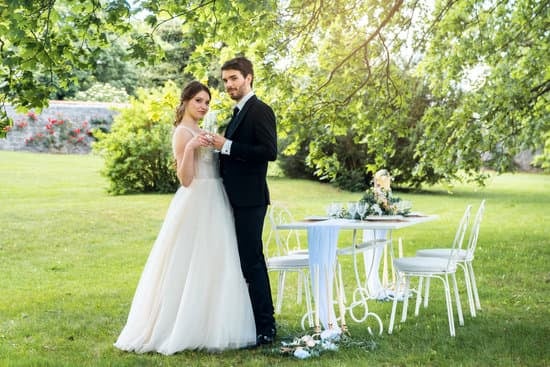Planning for a wedding involves many details, and one crucial aspect is finding the perfect wedding dress. However, understanding wedding dress sizing can be a confusing and challenging process. If you’re wondering “how do wedding dress sizes run?” this article will provide an overview to help you navigate the complexities of wedding dress sizing.
The history of wedding dress sizing is rooted in traditional garment measurements, which have evolved over time to reflect changes in fashion trends and body types. Understanding the differences between wedding dress sizes and regular clothing sizes is essential for brides-to-be, as it can impact the shopping experience and the final fit of the gown.
One common issue with wedding dress sizing is the discrepancy between a bride’s usual clothing size and her bridal size. This can lead to frustration and disappointment when trying on dresses.
However, there are tips and alternatives for finding the right size wedding dress that will be explored in this article. Whether you have a standard or non-standard body type, understanding how to navigate sizing charts and measurements is crucial in ensuring that your dream dress fits perfectly on your big day.
The History of Wedding Dress Sizing
In the 1940s, the American War Production Board established standard sizing guidelines for women’s clothing, including wedding dresses, in order to streamline garment production during wartime. This system was based on bust, waist, and hip measurements, and it laid the foundation for modern dress sizing as we know it today.
However, it is important to note that wedding dress sizes do not always align with regular clothing sizes. Bridal designers may have their own unique sizing charts and patterns, which means that brides-to-be often need to order a size or two larger than their regular clothing size. This can lead to confusion and frustration for many individuals who are unsure about how wedding dress sizes run compared to everyday attire.
| Decade | Developments in Wedding Dress Sizing |
|---|---|
| 1940s | American War Production Board establishes standard sizing guidelines for women’s clothing |
| 1950s | The hourglass figure becomes popular leading to changes in wedding dress designs and sizings. |
The Differences Between Wedding Dress Sizes and Regular Clothing Sizes
When it comes to wedding dress sizes, many brides-to-be find themselves confused by the differences between these sizes and regular clothing sizes. Understanding these distinctions is crucial for finding the perfect fit for your special day. Here are some key differences between wedding dress sizes and regular clothing sizes:
- Wedding dress sizing is typically different from standard clothing sizes, often running smaller than everyday attire. This can be attributed to the structure and design of wedding dresses, which may require a more precise fit compared to casual or formal wear.
- The sizing of wedding dresses also varies across different designers and brands, making it essential for brides to pay close attention to individual sizing charts and measurements when selecting their gown. It’s not uncommon for a bride to wear a larger size in a wedding dress than in her regular clothing due to these discrepancies.
- Additionally, bridal sizing often follows a different set of measurements, focusing on bust, waist, and hip dimensions rather than just overall size numbers. This emphasizes the importance of accurate measurements and alterations to ensure the best possible fit for each bride.
Understanding these differences is key to navigating the process of finding the right size wedding dress for your big day. Keep in mind that it’s perfectly normal for wedding dress sizes to run differently from regular clothing sizes, so don’t be discouraged if you need a larger size than anticipated – what truly matters is how beautiful you feel in your gown.
Common Issues With Wedding Dress Sizing
When it comes to wedding dress sizing, many brides-to-be encounter common issues that can lead to frustration and disappointment. Understanding these issues and knowing how to navigate them can help alleviate some of the stress associated with finding the perfect wedding dress. From inconsistent sizing across different designers to the emotional impact of not fitting into a “standard” size, there are several factors that contribute to the challenges of wedding dress sizing.
Inconsistent Sizing Across Designers
One of the most common issues with wedding dress sizing is the lack of standardized measurements across different designers and brands. A bride may find that she wears a completely different size in one designer’s dresses compared to another’s, leading to confusion and uncertainty when trying on gowns.
This inconsistency can make it difficult for brides to know where to start when looking for their perfect dress, as they may have to try on several different sizes before finding the right fit.
Emotional Impact of Non-Standard Sizing
Another common issue with wedding dress sizing is the emotional impact it can have on brides who do not fit into “standard” sizes. Many bridal shops carry sample sizes that are smaller than the average woman’s body, leading to feelings of inadequacy or self-doubt when dresses don’t zip up all the way or are too tight in certain areas.
This can lead to a negative experience while shopping for a wedding dress, which should be a joyful and exciting time for the bride-to-be.
Unrealistic Size Expectations
Additionally, some brides may struggle with unrealistic size expectations based on their usual clothing sizes. Wedding dresses often run smaller than regular clothing sizes, so brides may find themselves having to choose a larger size than they are used to.
This can be disheartening and make it challenging for brides to feel confident in their appearance on their special day. Understanding these common issues with wedding dress sizing is essential for navigating the process of finding the perfect gown with confidence and ease.
Tips for Finding the Right Size Wedding Dress
When it comes to finding the right size wedding dress, it’s important to keep a few key tips in mind. Wedding dress sizing can be confusing and frustrating, but with some guidance, you can ensure that you find the perfect dress for your special day.
Here are some tips for finding the right size wedding dress:
- Know Your Measurements: Before you start shopping for a wedding dress, it’s important to know your measurements. This includes your bust, waist, and hip measurements. Keep in mind that wedding dress sizes often run smaller than regular clothing sizes, so don’t be discouraged if you end up needing a larger size than you’re used to.
- Try Different Styles: Wedding dress sizing can vary between different designers and styles. What may fit perfectly in one style could be completely different in another. It’s important to try on different styles to see what works best for your body type.
- Consult Sizing Charts: When shopping online or visiting bridal boutiques, make sure to consult their sizing charts. These charts can give you an idea of how their dresses run and what size would best fit your measurements.
By following these tips, you can navigate the challenges of wedding dress sizing and find the perfect gown for your special day. Remember that every bride is unique, and finding the right size is just part of the process of creating your dream wedding look.
Alternatives for Brides With Non-Standard Body Types
For brides with non-standard body types, finding the perfect wedding dress can be a daunting task. Many traditional bridal shops may not carry a wide range of sizes to accommodate different body shapes. This often leads to frustration and disappointment for brides who do not fit the standard “sample size” of wedding dresses. However, there are alternatives available for brides with non-standard body types that can help them find their dream dress.
One alternative for brides with non-standard body types is to seek out bridal shops that specialize in plus-size or petite wedding dresses. These specialty shops often have a wider range of sizes and styles specifically designed to flatter different body shapes. Brides can also consider working with a talented seamstress or designer to create a custom wedding dress that perfectly fits their unique silhouette.
Another alternative is to explore online retailers that offer customizable sizing options for wedding dresses. Many online bridal boutiques provide detailed measurement guides and the option to input custom measurements when ordering a dress. This allows brides with non-standard body types to ensure a better fit without having to undergo extensive alterations after receiving their dress.
Finally, considering off-the-rack options from non-traditional retailers can also be a great alternative for brides with non-standard body types. Department stores and fashion brands often carry elegant white dresses that can serve as beautiful and affordable wedding gowns for brides of all shapes and sizes.
| Alternatives | For Brides With Non-Standard Body Types |
|---|---|
| Bridal Shops Specializing in Plus-Size or Petite Wedding Dresses | Specialty shops offer wider range of sizes & styles |
| Customizable Sizing Options from Online Retailers | Allows input of custom measurements for better fit |
| Off-the-Rack Options from Non-Traditional Retailers | Department stores & fashion brands carry elegant white dresses suitable for weddings |
How to Navigate Sizing Charts and Measurements
Navigating sizing charts and measurements when it comes to wedding dresses can be a daunting task for many brides-to-be. With the various differences between wedding dress sizes and regular clothing sizes, it’s important to understand how to read and interpret sizing charts and take accurate measurements in order to find the perfect fit for your special day.
Understanding Sizing Charts
When it comes to wedding dress shopping, each designer may have their own unique sizing chart. It’s important to carefully study each designer’s chart before making any decisions. Take note of the bust, waist, and hip measurements that correspond with each size to ensure you select the most accurate size for your body type.
Taking Accurate Measurements
One of the best ways to ensure you select the right wedding dress size is by taking accurate body measurements. Use a flexible measuring tape and follow a guide on how to properly measure your bust, waist, and hips. Keep in mind that it’s always better to round up if you fall between two sizes, as it’s easier for a seamstress to take in a dress than let it out.
The Importance of Professional Help
If you’re unsure about navigating sizing charts or taking accurate measurements, don’t hesitate to seek professional help at bridal boutiques. Experienced consultants can guide you through the process and assist in determining the best size for you based on your specific measurements and the designer’s sizing chart. Their expertise can be invaluable in finding a wedding dress that fits flawlessly on your big day.
What to Do if Your Wedding Dress Doesn’t Fit
In conclusion, understanding how wedding dress sizes run is crucial for any bride looking for the perfect gown. The history of wedding dress sizing and the differences between wedding dress sizes and regular clothing sizes shed light on the complexities that come with finding the right fit. Common issues with wedding dress sizing, such as vanity sizing and discrepancies between designers, can often lead to frustration for brides-to-be.
To ensure that you find the right size wedding dress, it’s important to follow tips such as getting professionally measured, trying on different styles, and being open to alterations. Navigating sizing charts and measurements can also be helpful in finding the perfect fit. For brides with non-standard body types, there are alternative options available such as custom-made dresses or choosing separates instead of a traditional gown.
If your wedding dress doesn’t fit as expected, don’t panic. There are solutions such as alterations and adjustments that can be made by a skilled seamstress or tailor.
It’s important to factor in enough time for alterations when purchasing a wedding dress to ensure that it fits perfectly on your special day. Regardless of the challenges that may arise with wedding dress sizing, taking these factors into consideration will help any bride feel confident and beautiful on their wedding day.
Frequently Asked Questions
What Is a Size 10 Wedding Dress Equivalent To?
A size 10 wedding dress is typically equivalent to a medium or large in regular clothing sizes. However, it’s important to note that bridal sizing can vary between designers and specific styles.
What Is a Size 12 in Bridal?
In bridal sizing, a size 12 is generally equivalent to a larger size in regular clothing, often falling within the range of a large or extra-large. Again, it’s crucial to keep in mind that sizes can differ among designers.
How Do I Find My Wedding Dress Size?
To find your wedding dress size, it’s best to get professionally measured by a bridal consultant or seamstress. They will take accurate measurements of your bust, waist, and hip to determine the most appropriate size for you. It’s important not to rely solely on your usual clothing size as bridal measurements may differ.

I have been involved in marriages for over 20 years helping couples and singles understand more about them.





